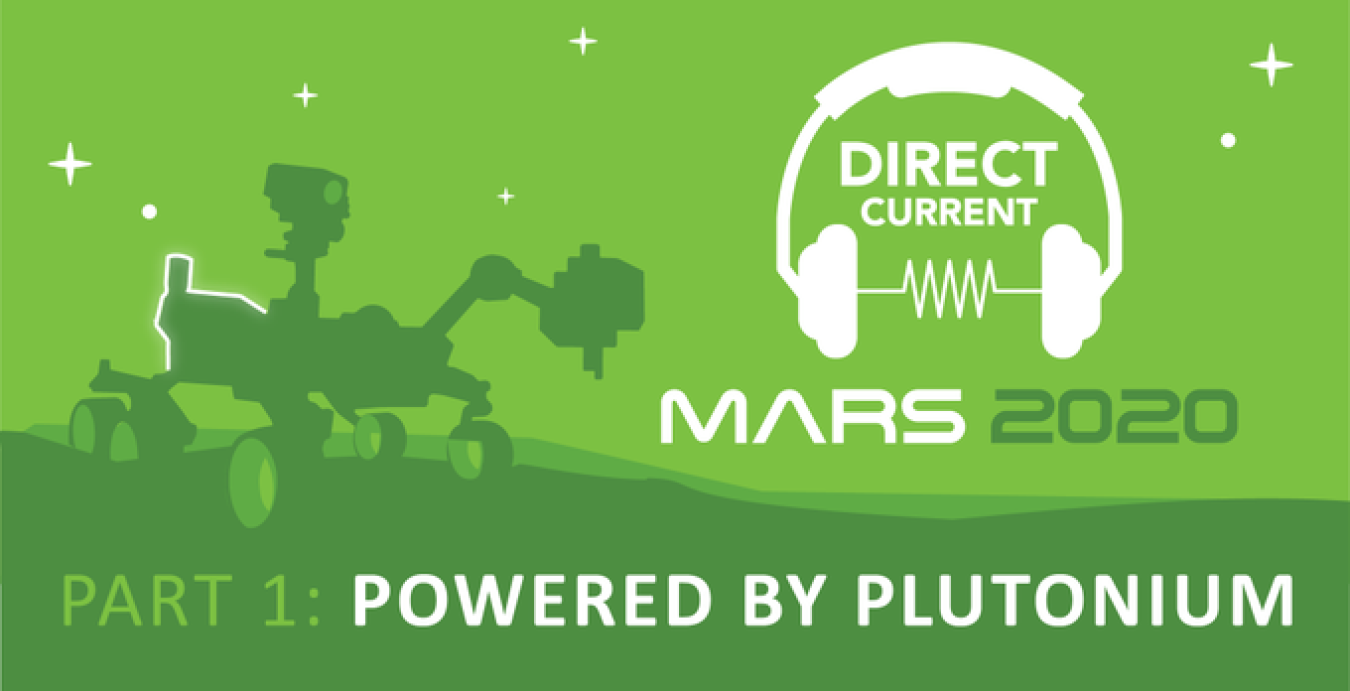NASA's Mars 2020 Perseverance Rover is first rover in more than 30 years to use plutonium created by DOE national labs.
July 27, 2020This week, I have the privilege of traveling down to Florida’s Kennedy Space Center to witness the historic launch of the Mars 2020 Perseverance Rover. NASA’s latest mission is of particular interest to the U.S. Department of Energy because it will be the first rover in more than 30 years to use domestically produced plutonium created by our incredible national laboratories—successfully rebuilding the nation’s supply chain capability for future missions.
When most people think of space travel, they don’t think of DOE—but they should. The nuclear power systems developed by our labs have made many of truly amazing interplanetary research missions possible.
Some of our power systems are still in operation today—more than 40 years after launch—exploring the region between stars in interstellar space. Now that’s what I call perseverance!
See how Idaho National Laboratory assembled and tested the power source for the Mars 2020 Perseverance Rover.
Powering Perseverance
The mission of the Mars 2020 Perseverance Rover is to find signs of ancient life and drill and collect soil samples that can be potentially returned to Earth in a future mission.
Perseverance will be equipped with a multi-mission radioisotope thermoelectric generator (RTG) that will reliably power the rover throughout its journey. The system converts heat generated by the natural decay of plutonium-238 into electricity and will keep the rover’s tools and systems running at optimal levels once it lands on the red planet.
To date, DOE has built nearly 50 radioisotope power system units that have powered more than two dozen U.S. space missions.

Listen to our Direct Current Podcast: Mars 2020, Part 1: Powered by Plutonium
My office is responsible for maintaining the infrastructure that’s required to fuel, build and test each power system. It takes a great deal of talent, coordination and collaboration between the researchers at our labs—and they have executed brilliantly!
Oak Ridge National Laboratory (ORNL) provided the plutonium oxide heat source fuel and fuel cladding for the Perseverance power system. Los Alamos National Laboratory (LANL) manufactured the fuel by encapsulating the plutonium-238 and Idaho National Laboratory (INL) assembled and tested the unit.
DOE delivered the power system to Kennedy Space Center this spring and successfully tested it with the Perseverance rover. A small crew from INL has been down there ever since, monitoring the power system before it was integrated with the rover several days prior to this week's launch.
Fueling Deep Space Exploration
Perseverance’s RTG is the first to use plutonium developed by our labs in more than 30 years and it won’t be the last. INL, LANL and ORNL have been working closely with NASA to help fortify its fuel supply of plutonium-238—the isotope used for deep space missions like this.
ORNL recently automated part of this production process, allowing them to produce up to 400 grams of plutonium-238 each year, moving closer to NASA’s ultimate goal of 1.5 kilograms per year by 2026.
While the United States has enough fuel to support space missions through the next decade, this continued partnership between DOE and NASA ensures that there will be an ample supply of domestic plutonium to support future missions.
WATCH: ORNL-produced tech fuels NASA's Perseverance mission to Mars
Expanding Exploration
Nuclear power systems are truly the bread and butter of our work with NASA but DOE is also expanding its portfolio, and applying its expertise in nuclear energy, to support other areas of space exploration.
As part of our new strategy to regain global leadership in nuclear energy, we are working with industry and the Department of Defense to demonstrate and deploy microreactors within the decade. These small reactors could potentially be modified to provide surface power for future missions on the moon and eventually Mars.
We’re also supporting the development of nuclear thermal propulsion rockets that could significantly reduce travel times and carry greater payloads than today’s top chemical rockets—giving humans a great chance of exploring deep space. INL is currently helping NASA develop and test fuel composites at its Transient Reactor Test facility to examine how they perform under the harsh temperatures needed for nuclear thermal propulsion.
We Will Persevere
I’m extremely proud of our work in supporting this Mars 2020 mission, and in many ways, Perseverance might be the best word to describe the challenges our nation is working to overcome as we continue our fight against the Coronavirus.
As Administrator Jim Bridenstine recently stated:
“We have to remember that NASA has an amazing ability to do stunning achievements even in the midst of difficult times.”
I’m honored to be part of this historic launch and of the strong, longstanding partnership that exists between our departments.
As a former NASA intern, it will be a dream come true for me watching Perseverance start its seven-month journey to the Red Planet.
But the work doesn’t stop there. Our labs are already preparing our next nuclear power system for the Dragonfly rotorcraft lander mission that would explore Saturn’s largest moon, Titan.
Dragonfly is scheduled to launch in 2026.
Until then, Godspeed!


